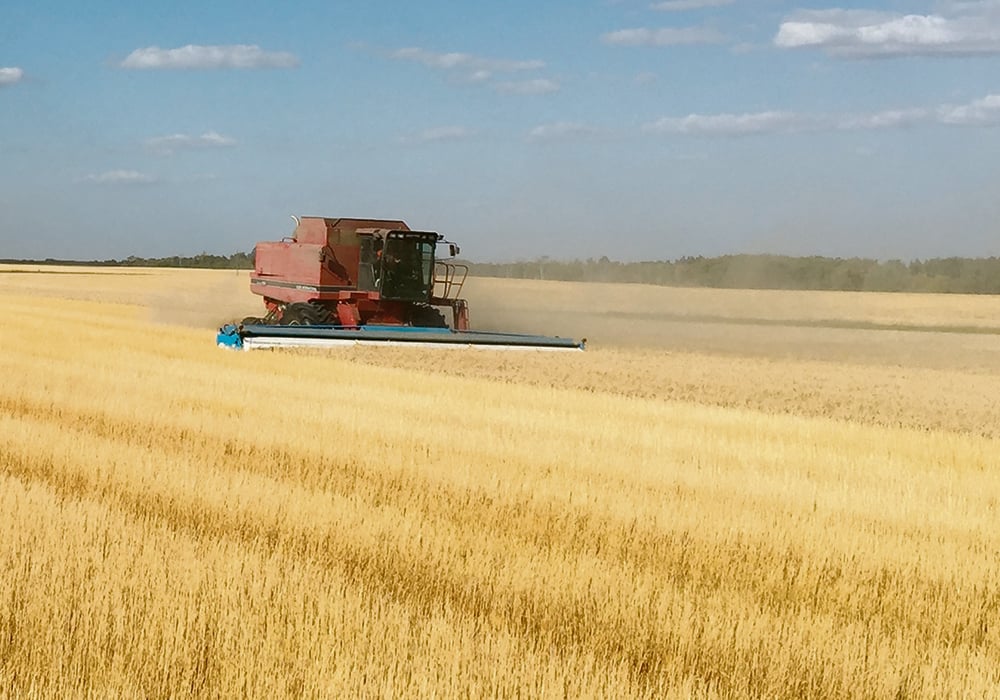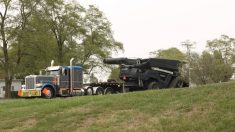There is a lower-cost alternative to buying a new swather or a bigger combine; a header that leaves most the plant behind
As the practice of desiccation tumbles into our history books, prairie crop production will dramatically change forever. Farmers are considering flipping that heavy investment in straight-cut headers into swathers.
However, a few farmers are bucking that trend. Instead of buying new swathers, they’re instead buying stripper headers. Shelbourne Reynolds Stripper headers were introduced to the Prairies 28 years ago as a zero-till tool. Although they never sold in great numbers, some of the early models are still in use.
XCV36 — One of the latest stripper converts is Darren Maddess at Deloraine, Man. He ordered his 36-foot XCV last fall from Hepson Equipment in Brandon, and received the $127,500 header this spring. The stripper fits his re-arranged regenerative farm strategy, which includes a Bourgault 3720 disc drill.
“The stripper header and disc drill should be sold together as a package deal, because they seem to naturally belong together,” said Maddess the first week of October.
Moving gradually into regenerative farming, Maddess began planting fall cover crops in 2016. When the weather co-operates, he gets about one-third of the farm seeded to a cover crop.
“We got the disc drill in 2018, and that enabled us to seed through tall straw. I did a little bit of seeding behind the stripper header this fall, and that looks pretty good right now. Looking at the ground, it’s nice to see just chaff, and not a bunch of straw that will give me hair pining problems.

“Most of my cover crops are going to winterkill. If there’s a surviving crop, I’ll spray it out in the spring. For the spring crop where I have cover crops, the straw has already gone through the drill once, so there won’t be any seeding problem. For the other two-thirds of the acres, I don’t anticipate any seeding trouble. In combining and seeding, I always try to go the same direction as the field was seeded.”
The loss of desiccants doesn’t seem to bother Maddess. Although he is not gearing up for more swathing, as many farmers are doing, he is keeping the swather for occasions where it’s still a good fit. And he expects to continue using his flex header for peas and soybeans.
The stripper will be used to direct combine other crops without a desiccant.
“As for canola, I haven’t used pre-harvest spray unless I have a severe weed issue. I think a lot of guys spray canola pre-harvest because putting all that material through the combine consumes so much power and it’s hard on the machine.
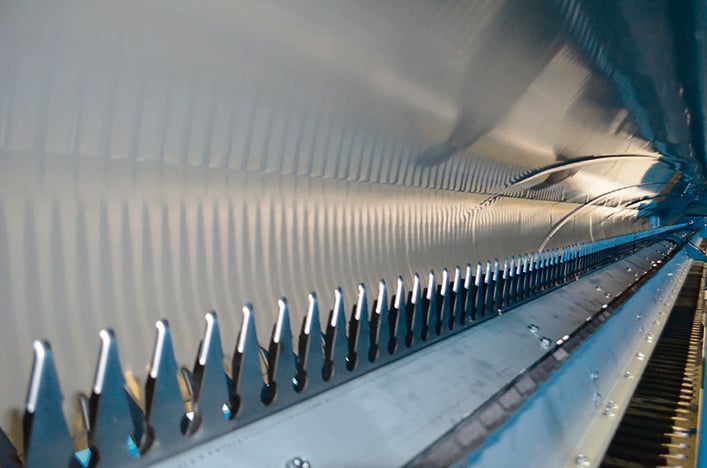
“With the disc drill the last few years I’ve been cutting high because I’ve been confident the drill could handle the stubble. This year with the stripper header, there was very little material going through the combine. I was cutting very high and leaving green stalks behind standing in the fields. I wasn’t concerned about drying them down.
“I’ve been watching the monitor closely. Typically in the past I was burning one gallon per acre straight cutting cereal crops. This year with the stripper header in cereals, I’ve been burning 0.6 gallons per acre. It’s not only the fuel savings, but that tells me my combine will last longer. Plus, it’s nice to buy something that gives a proven dollar benefit right off the bat.”
Read Also
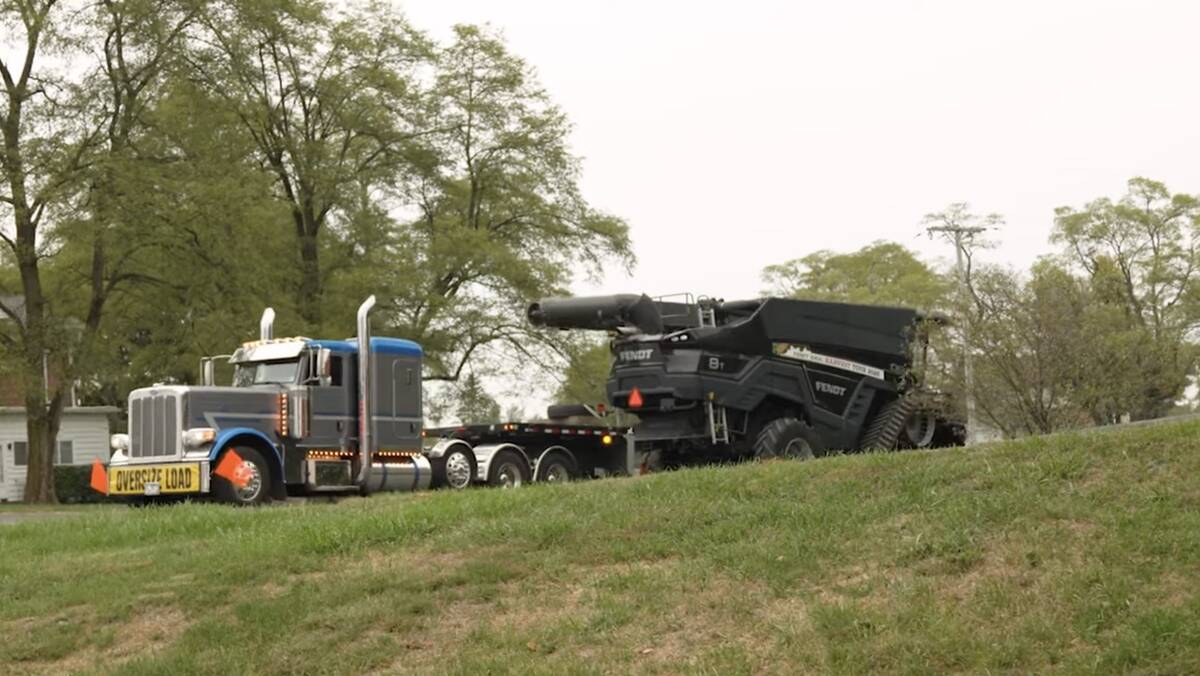
Fendt takes a combine on the road in the U.S.
Putting an Ideal combine in fields across different regions has given the brand a chance to prove that the combine is capable of performing well in a variety of conditions.
Maddess uses CropPro for some of his agronomic advice, but also handles a lot of it himself. He says they’ve been helpful in dealing with the regenerative concept, but concedes that it is a new area for them. Maddess is a student of the concept, attending conferences and studying the research, much of which he shares with CropPro.
“There’s definitely a learning curve here. At this point, my mistake list is longer than my success list. Hopefully, those mistakes will turn into positive lessons.”
CVS32 — Brandon farmer Ryan Boyd bought a used 2002 model CVS32 stripper header five years ago, mainly to work in conjunction with the 1890 disc drill in his regenerative farming strategy.
“I run it on an older combine. This header gives it quite a bit more capacity. It plows through green straw with no problem at all. That’s where it shines for us.” He adds that they run the header as tall as possible, just to get the heads off the stalks.
“Located where we are, we harvest a lot of tough wheat and tough oats. The straw can still be green and we can rip right through it. It gives us more flexibility and efficiency to go out there with the combine and get the crop when the straw is still green. Or if there’s a lot of weeds, there we go right through it.
“Our main intention is to leave the straw so the disc drill passes through without hair pining. We want the straw standing, not on the ground. We just sort of comb the straw. The drill is on 7.5 inch centres. By today’s standard, that’s pretty tight, but it works. The disc drill works well following it next spring.”
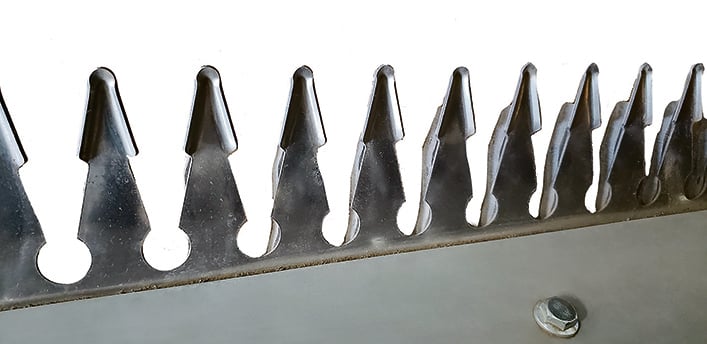
He uses the header in cereals, oats, flax, winter wheat. He says the biggest issue with his small combine is throwing grain out the back because it wasn’t designed to handle so much grain. He has to watch closely so he doesn’t get rotor loss. He adds that he can save on grade by getting out there and harvesting crop when other combines wait.
Boyd is a Nuffield Scholar, a prestigious rural leadership program, and he is looking at ways of inserting more grazing ruminants into cropping systems, to mimic more natural systems. On his farm, he uses his cattle to build up soil and create natural fertility.
“That’s where I spend the bulk of my time and energy these days. We still grow grain, but it’s no longer our main focus. That regenerative word gets thrown around pretty loosely these days. We’re thinking of ways to get more carbon into the soil, so I guess we’d market ourselves as regenerative farmers.”


